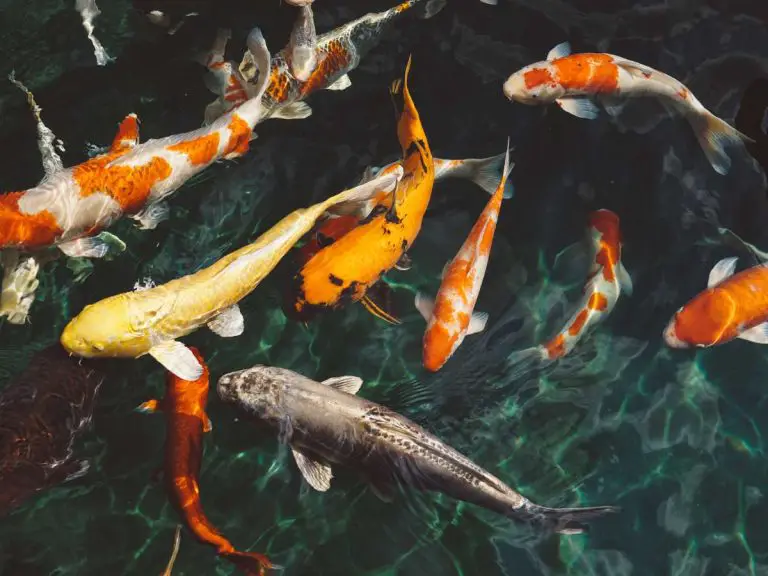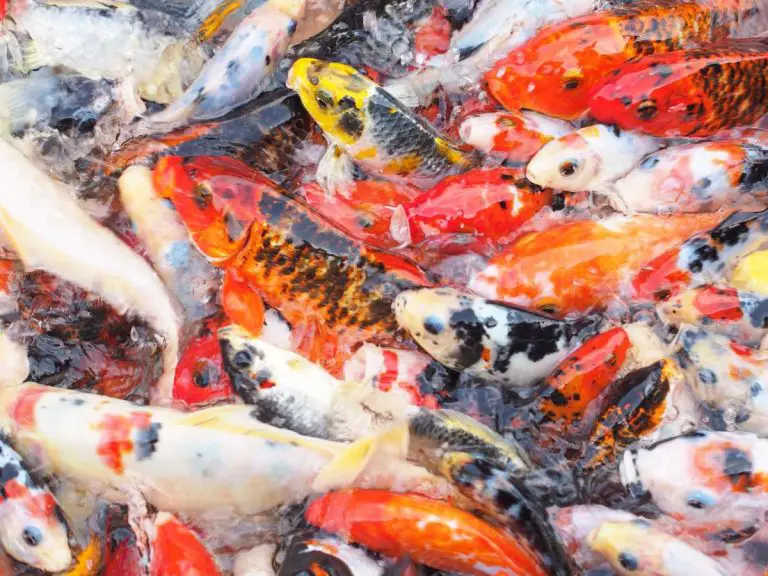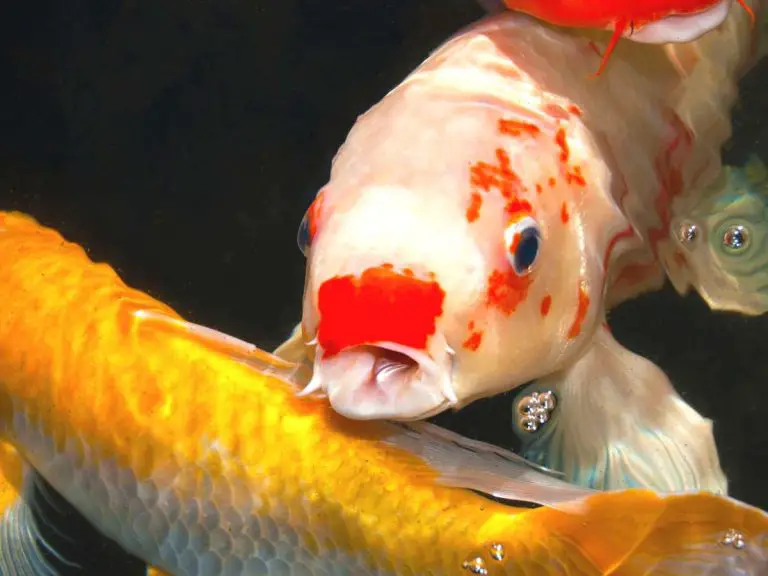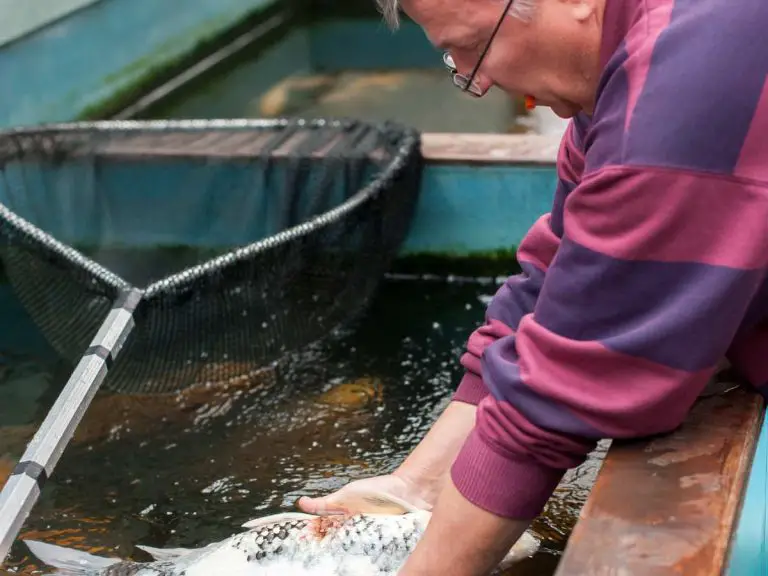Facts About Koi Fish: 40 Fascinating Facts & Insights into These Fascinating Fish!
Koi fish are more than just colorful additions to ponds and gardens. With roots in East Asia, they have a story that spans centuries, growing from simple pond fish to symbols of strength, love, and perseverance.
Today, koi are celebrated worldwide, not just for their beauty but for the rich history and cultural significance they carry.
Interested to learn more about the world of koi, including their origins, biology, and cultural impact? Whether you’re a koi owner or just a curious reader, here are 40 facts about these remarkable fish.
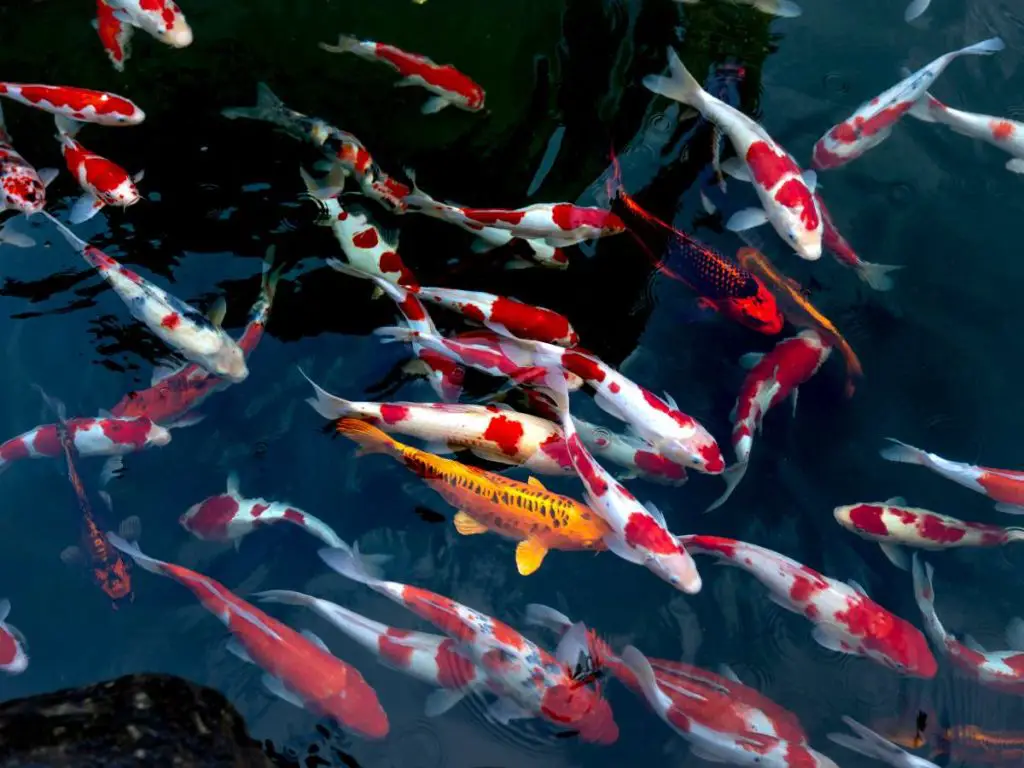
Origins and History Koi Facts
The story of koi fish is as colorful as their scales. Their past include a rich tapestry of events, from early domestication to their rise as symbols of prestige.
Domestication and Early History
- China’s First Koi: The journey of koi carp began in 4th Century China. It’s here that these fish were first domesticated.
- Breeding Grounds: While their roots may be in China, modern koi breeding practices took shape in Japan and China over millennia.
- From Carp to Koi: Koi fish trace their lineage back to the common carp. In Japan, they’re often referred to as “Goi.”
- A Name with Meaning: In Japanese, the word ‘koi’ isn’t just a name. It translates to “love” or “affection,” symbolizing bonds of friendship and kindness.
- Cultural Significance: In Japanese culture, koi fish are more than just ornamental creatures. They are deeply symbolic, representing luck, prosperity, and good fortune. Their vibrant colors and graceful movements have earned them the title “Nishikigoi,” which translates to “swimming jewel.”
- Historical Popularity: The allure of koi fish isn’t a recent phenomenon. Their popularity surged in 1914 when they were showcased in Tokyo. This event also marked the beginning of selective breeding, with Niigata, Japan, leading the way.
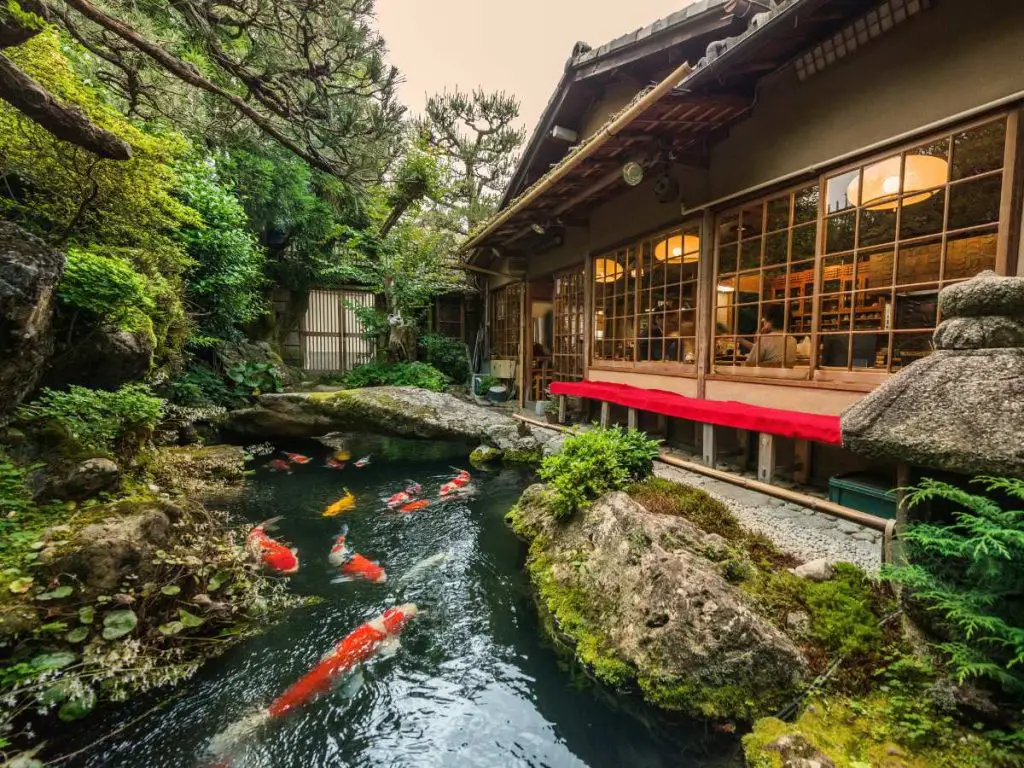
Ancestral Roots
- Back to the Basics: The common carp is the direct ancestor of today’s koi fish.
- DNA Doesn’t Lie: Scientific studies have confirmed the East Asian origin of the common carp, solidifying the koi’s historical roots in this region.
- Gifts of Prestige: Koi weren’t just kept in ponds. They were esteemed gifts, often presented to influential figures. This practice played a role in their spread, introducing them to places as far as Europe and the Americas.
- Koi and Goldfish Are Not the Same: While they might look similar to the untrained eye, koi and goldfish are not the same. They have different origins, with goldfish originating from China and koi from Japan. Additionally, koi are generally larger and have barbels on their upper lips, which goldfish do not.
Biology and Characteristics of Koi Fish
From their impressive lifespan to their diverse diet, koi are truly remarkable creatures.
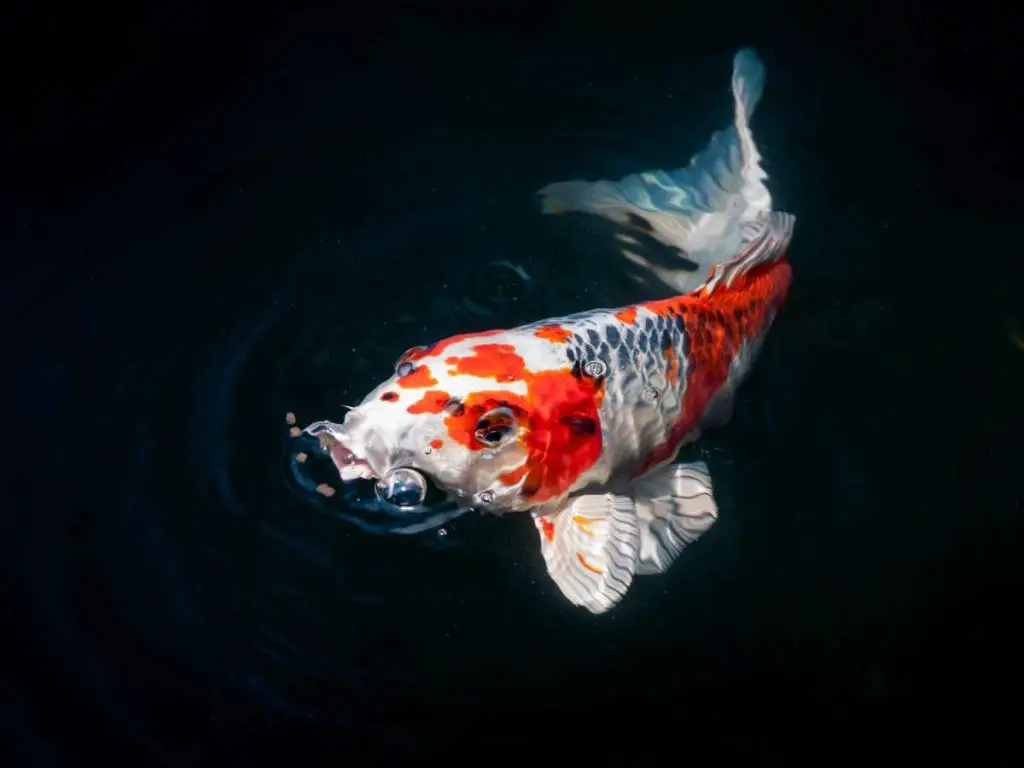
Lifespan and Growth Facts
- A Long Life: Under the right conditions, koi have the potential to live for over 50 years.
- The Reality for Many: Sadly, due to factors like inadequate care, the average lifespan of koi is often less than 10 years.
- Record-Breaking Longevity: The world of koi boasts some exceptional longevity records. Infact, Tthe oldest known koi was a female named Hanako who lived an astonishing 226 years!
- Steady Growth: Koi are steady growers. On average, a koi will grow about 0.5 inches per month. This steady growth, combined with proper care, can lead to some impressively sized fish over the years.
- Hefty Adults: The beauty and grace of koi might make one overlook their size, but an average adult koi is no lightweight. They typically weigh in at around 12 pounds, showcasing their robust and hearty nature.
(So Many!) Varieties of Koi
- A Spectrum of Varieties: Today, there are over 100 distinct koi varieties. These are typically grouped into 13 primary classes. Their mesmerizing patterns stem from three primary colors: red (Hi), white (Shiro), and black (Sumi).
- The Ghostly Variety: Among the many koi types, the Ghost koi stands out. Recognized for its unique metallic scales, it’s a favorite among enthusiasts.
For a full list of ALL the major koi varieties and groups, keep reading to the end of the article!
Koi Diet and Feeding Habits
- Natural Foragers: Koi are bottom feeders by nature, often scouring the pond floor for food.
- Koi Are Omnivores: Koi have a varied diet and are omnivores. They will eat a range of foods, including algae, insects, tadpole, and even small fish.
Physical Features of Koi
- Unique Dental Anatomy: Unlike many fish, koi have teeth located in their throats. These are used to grind down food.
- Shedding Teeth: Koi have the ability to shed and replace these throat teeth as needed.
- Sensitive to Sun: Just like us, koi can get sunburned. This is especially true for those with lighter scales, making shade essential for their well-being.
- Koi Can Hibernate: As the cold months approach and temperatures drop, koi undergo a significant behavioral change. They enter a state known as torpor, which is akin to hibernation. During this period, their metabolic rate slows down, and they become less active, conserving energy until warmer days return.
- Koi Can Grow Very Large: Depending on the variety and living conditions, koi can grow very large. Some koi have been known to grow up to 3 feet long.
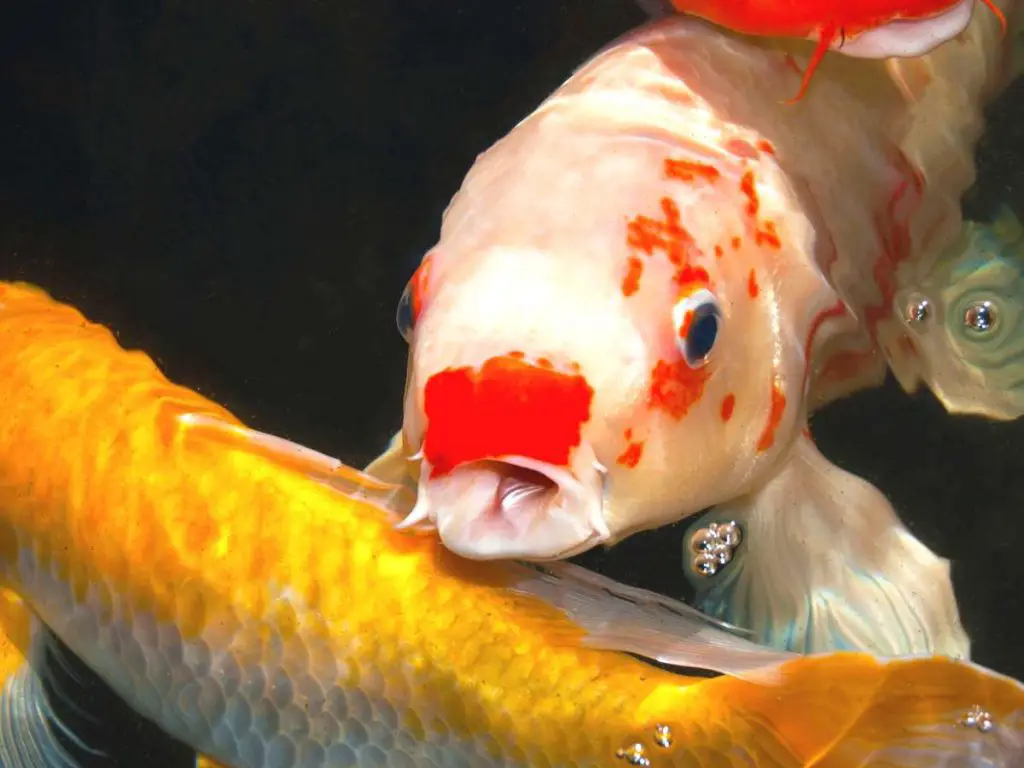
Cultural and Economic Significance of Koi
The allure of koi fish extends beyond their vibrant hues and graceful movements. From being symbols of prosperity to their esteemed value in the trade market, koi fish have left an indelible mark on societies across the globe.
Value and Trade of Koi
- High-Value Specimens: The world of koi trading is as diverse as the fish themselves. While many koi are accessible to enthusiasts at affordable prices, some rare and unique specimens command staggering sums. The pinnacle of koi trade was witnessed when a koi fish was sold for a jaw-dropping 1.8 million dollars, setting a record and highlighting the immense value these fish can hold.
- Everyday Prices: For the everyday enthusiast, koi fish are more accessible. Venture into a local pet shop, and you’ll likely find koi available for under $50. These fish, while not the rarest or most unique, still carry the charm and beauty that koi are renowned for.
- Valuation Factors: The price tag on a koi fish isn’t arbitrary. Several factors come into play, including their genetic lineage, unique patterns, size, and even their origin.
- Online Shopping: Perhaps not surprisingly given their demand, it’s now possible to buy high quality koi at reasonable rates online.
Cultural Symbolism and Traditional Significance of Koi
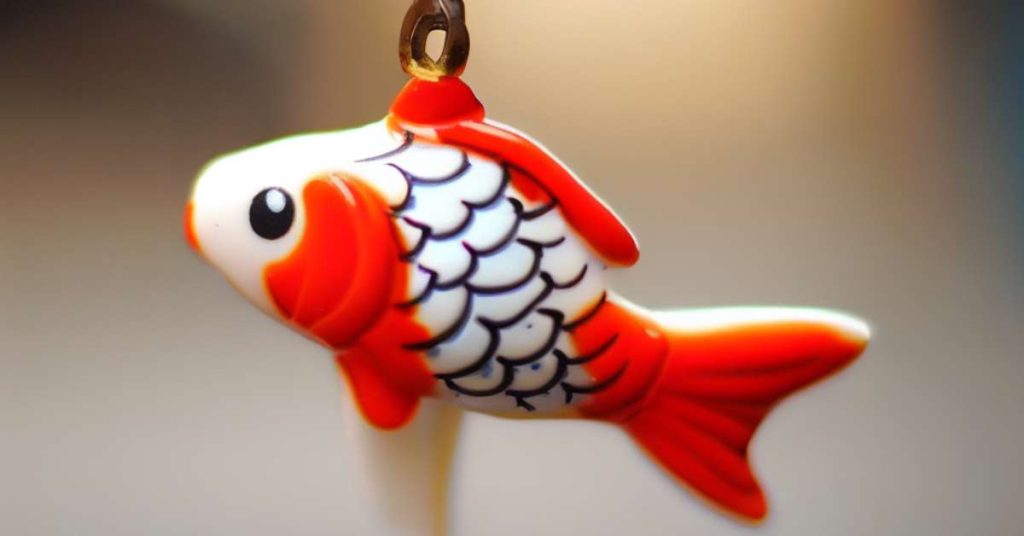
- Symbols of Strength and Perseverance: Koi fish are not just admired for their beauty; they are revered for what they symbolize. In various cultures, especially in Japan, koi are seen as embodiments of bravery, success, and individuality. Their upstream journey against the current mirrors the challenges one faces in life, making them symbols of resilience and determination.
- Legends of Transformation: One of the most enchanting tales associated with koi is the Japanese legend that speaks of their potential to transform into majestic dragons. As the story goes, if a koi succeeds in swimming upstream and leaping over the Dragon Gate waterfall, it is rewarded by being turned into a dragon. This metamorphosis symbolizes overcoming obstacles and achieving great success.
- Heirlooms of Respect and Love: In Japan, koi fish have traditionally held a place of honor in families. They were not just pets but cherished members of the household. It was common for koi to be passed down from one generation to the next, symbolizing continuity, respect, and deep familial bonds. This practice underscored the reverence and affection with which koi were regarded, making them more than just ornamental fish.
The popular Dragon Gate Legend in both Japan and China shows how koi are associated with perseverance and determination:
Japanese:
“Koi no takinobori” (鯉の滝登り)
This phrase translates to “koi climbing the waterfall.” It refers to the ancient legend where a koi fish that can swim upstream and leap over the Dragon Gate waterfall will transform into a dragon. This story is often used as a metaphor for perseverance, determination, and the ability to overcome obstacles to achieve one’s goals. The saying underscores the belief that with hard work and determination, one can overcome any challenge and transform into something greater.
This legend and the associated saying have inspired many artworks, stories, and even tattoos in Japanese culture, symbolizing strength, ambition, and the potential for greatness.
Chinese
“Lǐ yú tiáo lóng mén” (鲤鱼跳龙门)
This phrase translates to “the carp has leaped through the dragon’s gate.” It’s a variation of the aforementioned Dragon Gate legend, which is believed to have its origins in China before becoming popular in Japan. In the Chinese version of the story, any carp that could leap over the Dragon Gate waterfall would transform into a dragon. This transformation symbolizes success, especially in scholarly pursuits or examinations.
The saying is often used to describe someone who has overcome significant challenges to achieve greatness or to wish someone success in their upcoming endeavors, especially students preparing for important exams.
More Fun Koi Facts & Tidbits
From their unique behaviors to their impact on ecosystems, there’s always something fascinating to learn about these vibrant creatures fish
- Koi Can Recognize Their Owners: Koi are known to recognize the person who feeds them and will even eat from their hand. This showcases their intelligence and their ability to form bonds with humans.
- Vulnerable in the Wild: While koi are popular in ornamental ponds worldwide, their wild counterparts face challenges. Wild koi carp are classified as “vulnerable” due to threats like habitat loss, pollution, and overfishing.
- Unintended Consequences: While koi bring joy to many as pets, when they find their way into natural water bodies, they can become problematic. Feral koi, which are koi that have been released or have escaped into the wild, are considered pests in numerous regions. Their presence can disrupt local ecosystems, outcompeting native species for resources.
- Reading the Scales: Much like the rings of a tree tell its age, the scales of a koi can provide insights into its age. By examining these scales, one can determine the age of a koi, adding another layer to their intriguing biology.
- Koi Can Be Trained: With patience and consistency, koi can be trained to do tricks, such as jumping out of the water to take food from your hand.
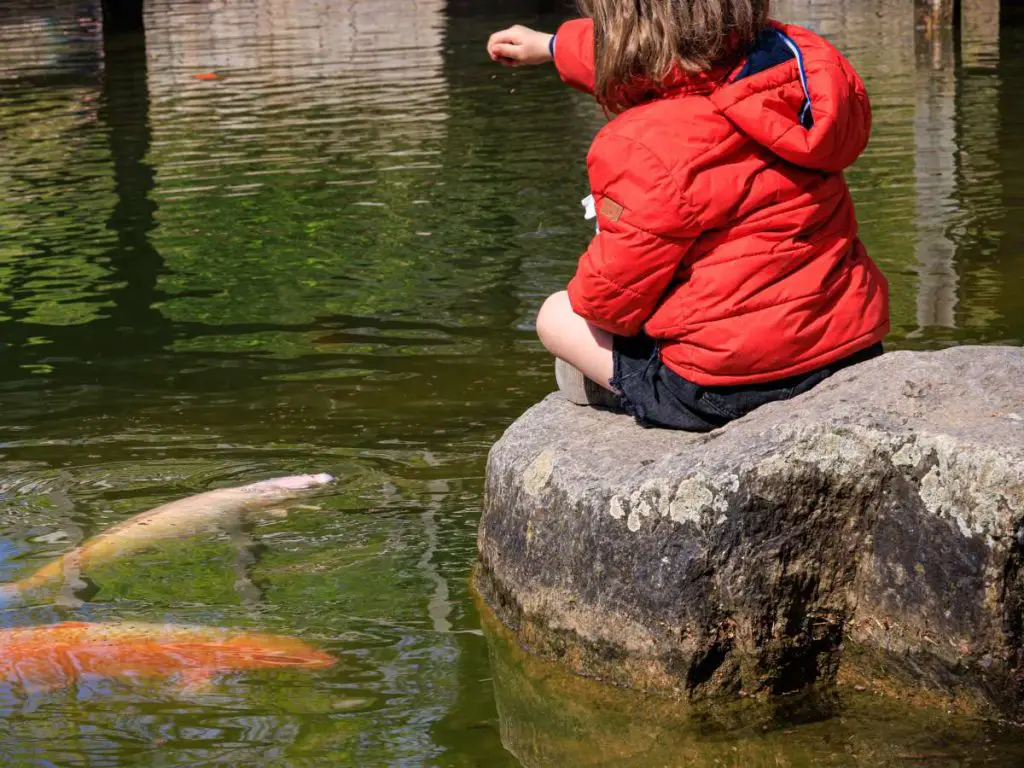
Caring for Koi Fish – Koi Facts You MUST Kniow
Hopefully, these koi facts have inspired you to think about getting one yourself (or, if you’re like me, getting more!). If you are interested in caring for koi, here are some facts you’ll need to know.
- Ideal Pond Conditions: While koi fish are adaptable, they thrive in specific conditions. Ponds with intricate rockwork and cascading waterfalls are ideal. Though they can survive in temperatures ranging from 45-95 F, a sweet spot of 68-75 F is recommended. During colder months, deeper ponds offer a temperature gradient, providing koi with a winter sanctuary.
- Koi Can Live in Different Water Temperatures: Koi are versatile and can live in various water temperatures. They can survive in temperatures ranging from 35°F to 85°F. However, it’s essential to ensure that the water temperature doesn’t change too rapidly, as this can stress the fish.
- Adults A Risk To Fry: Remember how we said adult koi are omnivores that eat animals smaller than they are? Well, baby koi, called fry, are smaller than adults, and may get accidentally eaten if kept in the same tank. If you plan to breed your koi, you’ll need to either separate your fry or provide them ample places to hide (or ideally both, at different times).
- Koi Can Jump! Koi fish like to jump out of the water, and can even jump out of your pond! They may also jump if their water is dirty in some way, or lacks oxygen (highlighting the need to provide koi with ideal water conditions). If your koi is jumping for fun and at risk of jumping outside of the pond completely, you can use a pond net.
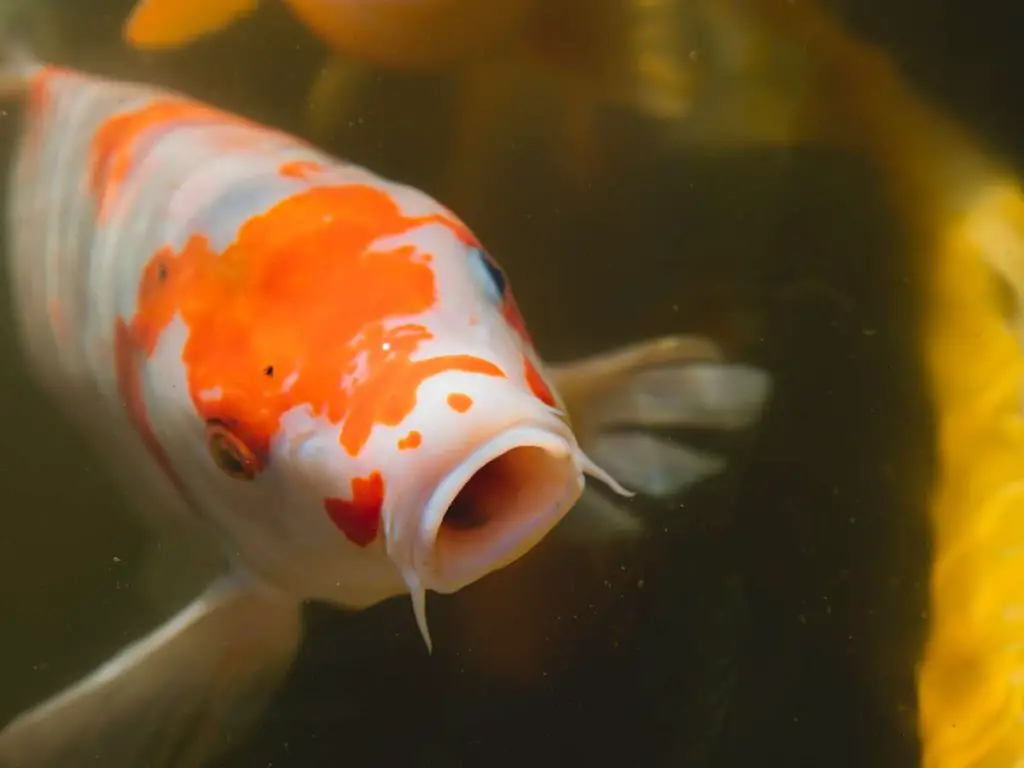
Bonus: Complete List of Major Koi Varieties
Like we’ve covered, there’s a wide range of koi varieties out there. Each variety has its unique beauty and characteristics, making koi ponds a vibrant and mesmerizing sight.
Here are the most common and popular, grouped in their 13 main categories
1. Gosanke (The “Big Three” Koi Varieties)
- Kohaku: White body with red patterns.
- Sanke (Taisho Sanshoku): White body with red and black patterns.
- Showa (Showa Sanshoku): Black body with red and white patterns.
2. Bekko
- Shiro Bekko: White body with black patterns.
- Aka Bekko: Red body with black patterns.
- Ki Bekko: Yellow body with black patterns.
3. Utsurimono
- Shiro Utsuri: White body with black patterns.
- Hi Utsuri: Red body with black patterns.
- Ki Utsuri: Yellow body with black patterns.
4. Asagi & Shusui
- Asagi: Light blue scales on the top and red on the bottom.
- Shusui: The Doitsu (scaleless) version of Asagi.
5. Koromo & Goshiki
- Ai Goromo: White body with blue-edged scales over red patterns.
- Sumi Goromo: White body with black-edged scales over red patterns.
- Goshiki: White body with red, black, blue, and dark blue patterns.
6. Hikarimuji
- Platinum Ogon (Purachina): Solid, metallic silver.
- Yamabuki Ogon: Solid, metallic gold.
7. Hikariutsuri
- Kin Showa: Showa with a metallic sheen.
- Gin Shiro Utsuri: Shiro Utsuri with a metallic sheen.
8. Hikarimoyo
- Yamato Nishiki: Metallic version of Sanke.
- Kujaku: White, metallic koi with reticulated net-like patterns and red/orange patterns.
- Hariwake: Metallic koi with orange or yellow patterns against a white background.
9. Tancho
- Tancho Kohaku: White body with a single red spot on the head.
- Tancho Sanke: Like Tancho Kohaku but with additional black patterns.
- Tancho Showa: Black body with a single red spot on the head and white patterns.
10. Doitsu (Scaleless or Partially Scaled Varieties)
- Doitsu Kohaku, Doitsu Sanke, Doitsu Showa, etc.
11. Kin Gin Rin (Sparkling Scaled Varieties)
- Kin Gin Rin Kohaku, Kin Gin Rin Sanke, etc.
12. Kawarimono (Miscellaneous Varieties)
- Chagoi: Olive green.
- Soragoi: Gray/Blue.
- Ochiba Shigure: Blue-gray with brown patterns, resembling “leaves on water.”
- Kigoi: Bright yellow.
- Midorigoi: Green.
- Kikusui: Doitsu version of Hariwake.
13. Hikarizoyo
- Ghost Koi: Mix of wild carp and Ogon koi, resulting in a metallic koi with ghostly patterns.
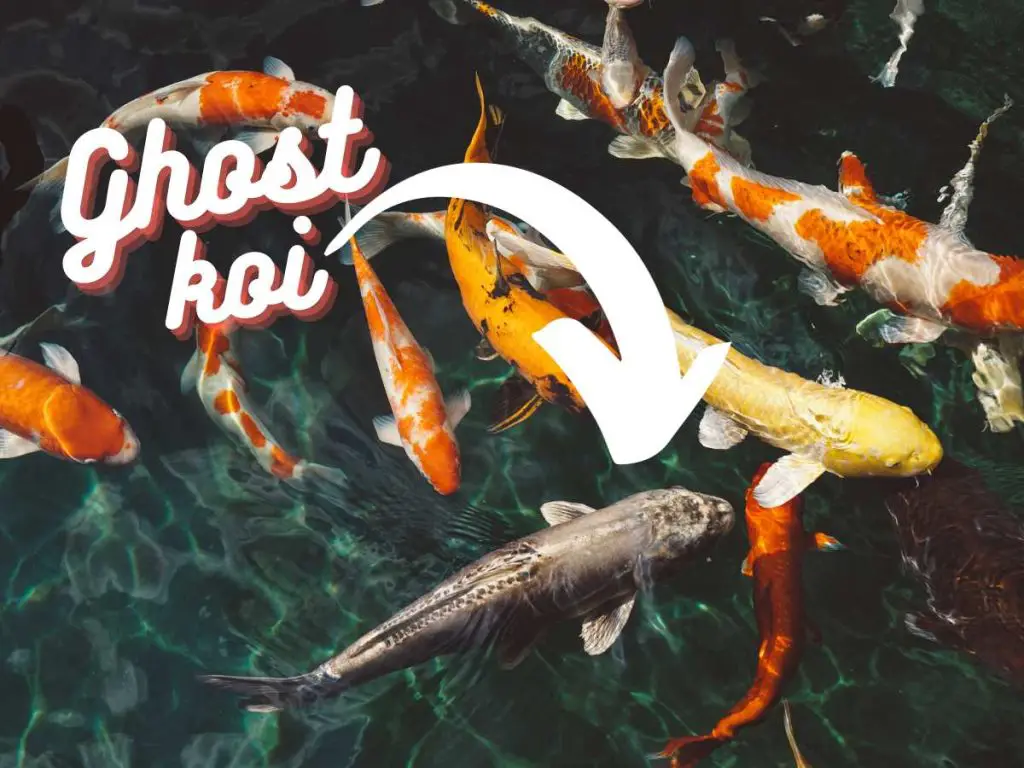
What is special about koi fish? Final Thoughts …
So … what is so special about koi fish, anyway? As this list makes clear: everything!
Koi fish, with their mesmerizing colors and patterns, have captivated the hearts of many across the globe. But beyond their aesthetic appeal lies a rich tapestry of history, culture, and biology that adds depth to their beauty.
From their ancient origins in East Asia to their symbolic significance in art and folklore, koi are more than just ornamental fish. They are living testaments to resilience, transformation, and the enduring bonds between humans and nature.
Whether gracing the serene waters of a garden pond or inspiring tales of bravery and perseverance, koi fish remain a testament to the wonders of the natural world and the intricate stories it holds.
As we continue to cherish and care for these remarkable creatures, we are not just preserving a species but also honoring a legacy that spans centuries.
Related Questions & Facts
Are koi fish smart?
Koi fish are known to have a good memory and can be trained to recognize their feeders. They can also be taught simple tricks, indicating a certain level of intelligence. However, we currently believe their intelligence is primarily driven by instincts and environmental cues.
How big is a 1-year koi?
A 1-year-old koi typically measures between 3 to 6 inches (7.5 to 15 cm) in length, depending on its variety and the conditions in which it is raised.
Why do koi jump out of water?
Koi may jump out of the water for several reasons, including skin irritation, parasites, poor water quality, or simply playful behavior. It’s essential to regularly check water conditions and monitor the health of the fish to prevent such occurrences.
.



